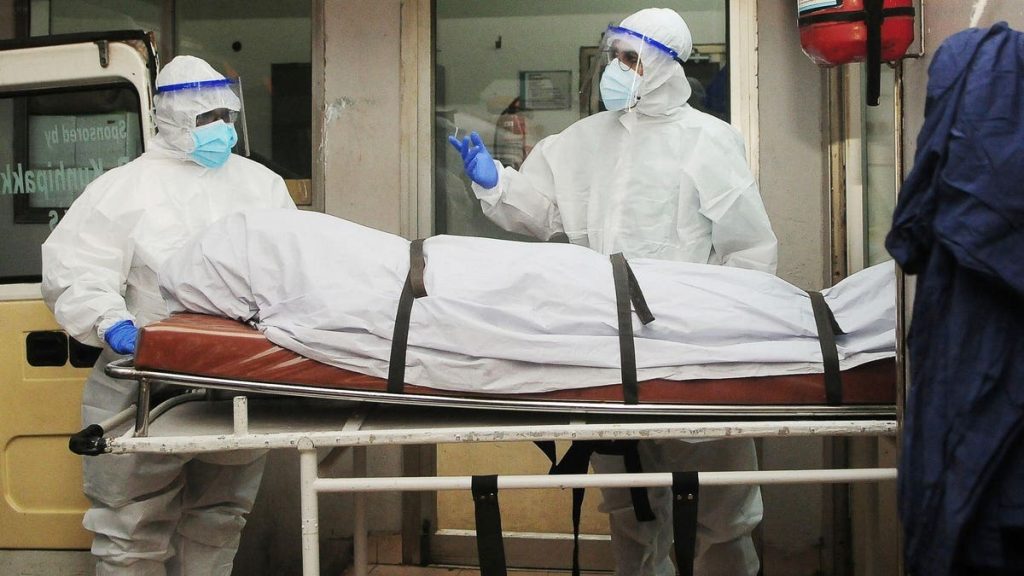Topline
Health officials in India have shuttered schools, offices and public transport and are testing hundreds of people in an effort to track and contain an outbreak of Nipah virus that has killed two people, but can kill as many as three in four people it infects and has been flagged by experts as having the potential to seed a new pandemic.
Key Facts
Nipah is a rare and potentially deadly virus that was first discovered in 1999 after an outbreak among pigs and pig farmers in Malaysia and Singapore.
Nipah is a zoonotic virus—meaning it can spread from animals to humans—and can infect humans through direct contact with infected animals or their bodily fluids or after eating contaminated food such as fruit products contaminated with urine or saliva from infected bats.
Cases of human-to-human transmission of Nipah have also been reported during past outbreaks, particularly among the families and caregivers of infected people.
In humans, symptoms typically arise between a few days and two weeks after infection, according to the World Health Organization, though periods as long as 45 days have been reported and it’s possible people may be infectious during this time (the WHO says pigs are “highly contagious” during this incubation period).
Nipah symptoms typically start with fever, headache and signs of respiratory illness like coughing that can rapidly worsen to brain swelling (encephalitis) and seizures that lead to a coma within a day or two.
Between 40% to 75% of people infected with Nipah will die from the virus, health agencies estimate, with the specific rate depending on the outbreak and strength of local medical systems managing the disease (long term neurological conditions like seizures and personality changes have been reported among those who recover from encephalitis).
News Peg
Health officials in India’s southern state of Kerala are rushing to track and contain an outbreak of Nipah that has already killed two people and hospitalized three others. According to news reports, public health workers have tested hundreds of workers and schools, government buildings, religious institutions, public transport and public offices have been closed or suspended in at-risk areas to curb potential spread. It is the state’s fourth outbreak since 2018 and experts warn the area might be at particular risk from virus spillovers given the destruction of natural bat habitats by humans in the region.
Key Background
Fruit bats, also known as flying foxes, are the natural hosts for Nipah. Nipah is in the same group of viruses as a number of pathogens known to cause disease in humans, including measles and mumps. Infection does not appear to cause noticeable disease in the fruit bats but the virus is known to infect a wide range of hosts—including humans, pigs, sheep, goats, horses, cats and dogs—and has been documented to cause severe disease in at least humans and pigs in past outbreaks. Its ability to infect a wide variety of hosts can make it harder for public health experts to track and to contain its spread. Nipah outbreaks have previously been reported in Bangladesh and India—the main places where the disease has been recorded since 2001—as well as Malaysia, the Philippines and Singapore. Between 1998 and 2015, there were some 600 cases of Nipah reported, according to the WHO.
What To Watch For
There are no drugs or vaccines authorized for use against Nipah virus in either humans or animals. Treatment for those infected is limited to supportive care and targeting specific symptoms as and when they arise. Some immunological therapies made of monoclonal antibodies are in the early stages of clinical trials, according to the Centers for Disease Control and Prevention. Antiviral treatment remdesivir, already used in humans for other diseases, was also effective when given after exposure to the virus in animal studies, the CDC said. There is also a vaccine for Hendra virus, a close relative of Nipah, available for horses in Australia that appears to offer a degree of protection against Nipah infection.
Tangent
The WHO has designated Nipah a priority pathogen for urgent research and development, one of just 10 diseases the agency lists as having the potential to seed the next pandemic for which we have few to no countermeasures. Other diseases on that list include three caused by coronaviruses—Covid-19, Middle East Respiratory Syndrome (MERS) and Severe Acute Respiratory Syndrome (SARS)—Zika, Ebola, Marburg, Lassa fever, Crimean-Congo haemorrhagic fever and Rift Valley Fever. The WHO, which says its list is not exhaustive, also lists “Disease X” as a potentially pandemic-causing pathogen, a moniker for a pathogen not currently known to cause disease in humans but could nevertheless trigger an outbreak in the future.
What We Don’t Know
Diagnosing Nipah can be tricky on account of its nonspecific symptoms and potentially long incubation period (the time between infection and symptoms emerging). According to the European Centre for Disease Prevention and Control, Nipah is “often misdiagnosed at first.” During the early stages of the disease, genetic testing of material from the patient can reveal an infection—in the same manner as Covid-19 PCR tests—and antibody tests can be used in later stages, though access to the technology and safety protocols required for testing may not be available in all parts of the world.
Disease X: The 100 Days Mission to End Pandemics (Book by Kate Kelland)
Read the full article here










